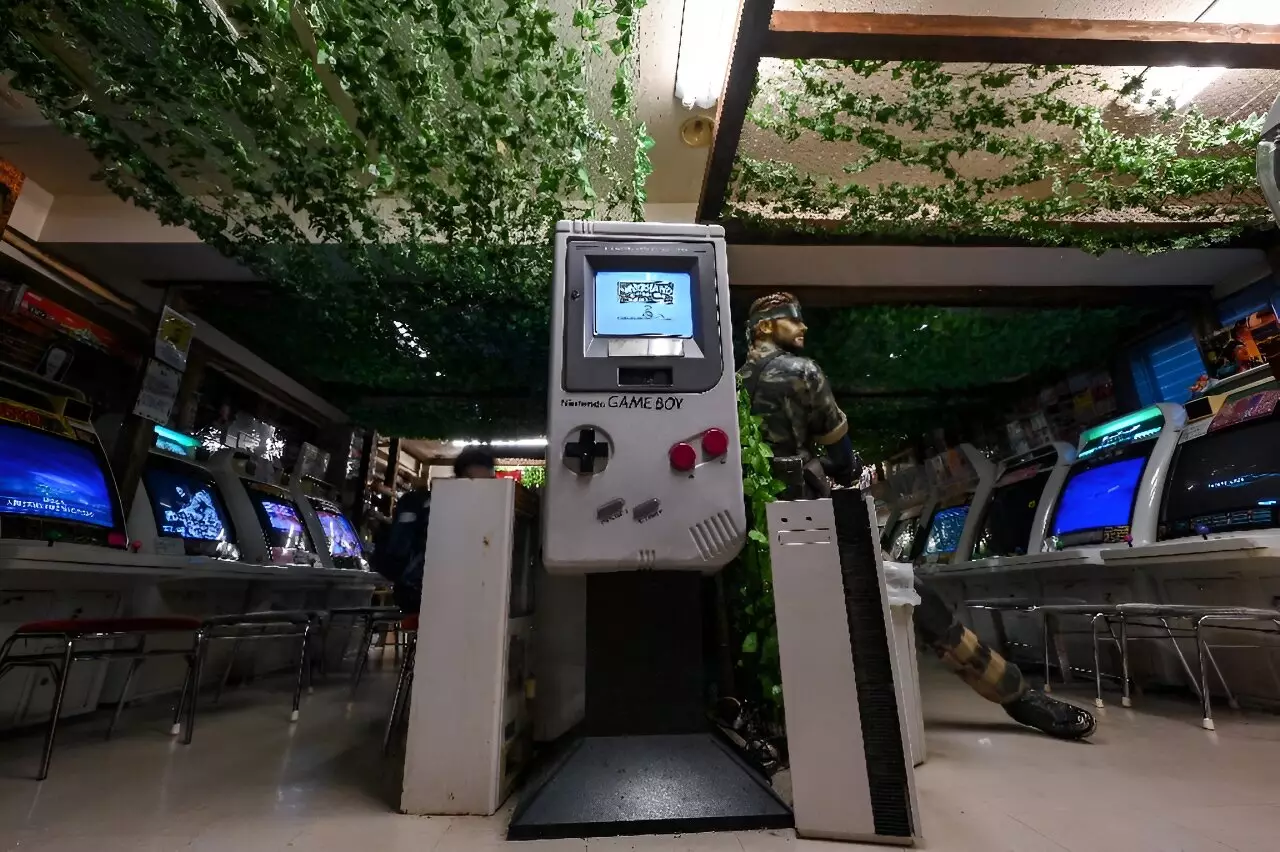In recent years, the pulsating heart of Tokyo, particularly the Akihabara district, has emerged as a haven for retro gaming enthusiasts. Individuals like 23-year-old David Madrigal embody the growing wave of tourists who visit Japan in search of nostalgic gaming experiences. After purchasing a PlayStation Vita for merely $200, a console he acknowledges would cost him close to triple the amount back in the United States, Madrigal reflects on the sheer joy he experiences while perusing the shelves of Super Potato—a renowned vintage video game store. With a youthful exuberance, he likens his visit to a child’s excitement in a candy shop, underscoring how deeply embedded video games are in personal histories and cultural identities.
Super Potato features an impressive collection spanning three floors, showcasing countless vintage treasures such as Sega Dreamcast consoles and classic Game Boy cartridges. Yet, it’s not merely the items themselves that draw in customers; it’s the collective experience—the ability to relive and share cherished memories that encapsulate the wonder of gaming from a different era.
The financial dynamics surrounding retro gaming are surprising, yet indicative of a broader trend that values nostalgia. While vintage items can command exorbitant prices—like a handheld Nintendo Game & Watch priced at $1,750—this market thrives on the emotional connection established by these artifacts. According to the store manager, international tourists represent a significant percentage of their clientele, highlighting how Japan has become a pilgrimage site for collectors seeking rare items.
Hiroyuki Maeda, a video game historian, notes that part of the allure lies in the distinct cultural branding of these consoles. Various consoles, such as the Nintendo Famicom, had different names and designs in international markets, which intrigues collectors. This phenomenon reflects the multifaceted nature of nostalgia, shaped by individual experiences and memories that vary greatly across cultures. As Madrigal articulately put it, today’s gaming landscape often feels repetitive, a stark contrast to the bold innovations of yesteryears. The current gaming culture seems more about refinement than revolution, leading many to seek inspiration from the past.
At the age of 50, an avid collector known online as Proudro has crafted a poignant narrative around the appeal of retro gaming. With a vast collection housed in an old building near his family home, he reveals that the act of collecting transcends mere gameplay. He cherishes the ambiance of being surrounded by games—the sounds, the memories—and affirms that he doesn’t need to play them to feel fulfilled. This assertion illuminates a broader exploration of what gaming represents: a connective thread to one’s youth, evoking memories of simpler times spent in bustling game shops or sharing laughter among friends.
Yet, the marketplace for retro items has shifted dramatically. Only a few decades ago, vintage games were nearly valueless, thrown into bins and sold at meager prices. Maeda highlights that the dramatic inflation of retro gaming prices, with some items fetching millions, speaks to a significant cultural shift. Collectors like Proudro who once scavenged dusty corners of forgotten shops are now met with a thriving online market, changing the landscape for both buyers and sellers.
As Proudro reflects on his journey, there remains a deep-seated desire to keep Japanese gaming relics within Japan’s borders. He draws parallels between modern gaming artifacts and traditional Japanese woodblock prints that, once exported, lost their place of origin. There’s a sense of urgency in his belief that Japan has yet to fully realize the intrinsic value of its gaming history.
This sentiment encompasses a larger discourse regarding cultural preservation amid global interest—how can a nation protect its heritage while simultaneously embracing the worldwide enthusiasm surrounding its products? The rise of international appreciation for Japanese classic gaming is a double-edged sword that invites both opportunities and challenges. As Proudro articulates, celebrating the past while fostering domestic appreciation is crucial to balancing this intricate dynamic.
As the realm of retro gaming continues to flourish, it serves as a vivid reminder of the past’s enduring influence on modern culture. With stores like Super Potato serving as sanctuaries for nostalgic gamers, and collectors bridging the old and new, the phenomenon represents much more than a mere trend. It symbolizes a collective commitment to memory, innovation, and the fun that uniquely defines gaming culture.
Retro gaming, an intersection of nostalgia and commerce, is not just about reliving the past; it’s an ongoing story that seamlessly weaves together individuals and cultures across the globe, all united by the simple joys of gaming.

